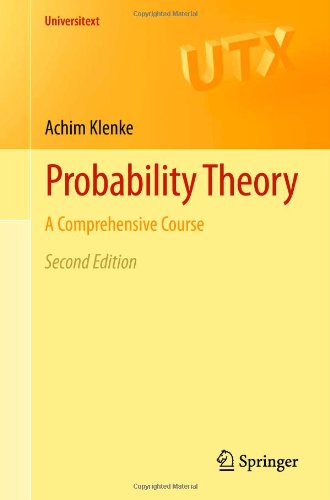

Most ebook files are in PDF format, so you can easily read them using various software such as Foxit Reader or directly on the Google Chrome browser.
Some ebook files are released by publishers in other formats such as .awz, .mobi, .epub, .fb2, etc. You may need to install specific software to read these formats on mobile/PC, such as Calibre.
Please read the tutorial at this link: https://ebookbell.com/faq
We offer FREE conversion to the popular formats you request; however, this may take some time. Therefore, right after payment, please email us, and we will try to provide the service as quickly as possible.
For some exceptional file formats or broken links (if any), please refrain from opening any disputes. Instead, email us first, and we will try to assist within a maximum of 6 hours.
EbookBell Team

4.0
66 reviewsThis second edition of the popular textbook contains a comprehensive course in modern probability theory. Overall, probabilistic concepts play an increasingly important role in mathematics, physics, biology, financial engineering and computer science. They help us in understanding magnetism, amorphous media, genetic diversity and the perils of random developments at financial markets, and they guide us in constructing more efficient algorithms.
To address these concepts, the title covers a wide variety of topics, many of which are not usually found in introductory textbooks, such as:
• limit theorems for sums of random variables
• martingales
• percolation
• Markov chains and electrical networks
• construction of stochastic processes
• Poisson point process and infinite divisibility
• large deviation principles and statistical physics
• Brownian motion
• stochastic integral and stochastic differential equations.
The theory is developed rigorously and in a self-contained way, with the chapters on measure theory interlaced with the probabilistic chapters in order to display the power of the abstract concepts in probability theory. This second edition has been carefully extended and includes many new features. It contains updated figures (over 50), computer simulations and some difficult proofs have been made more accessible. A wealth of examples and more than 270 exercises as well as biographic details of key mathematicians support and enliven the presentation. It will be of use to students and researchers in mathematics and statistics in physics, computer science, economics and biology.